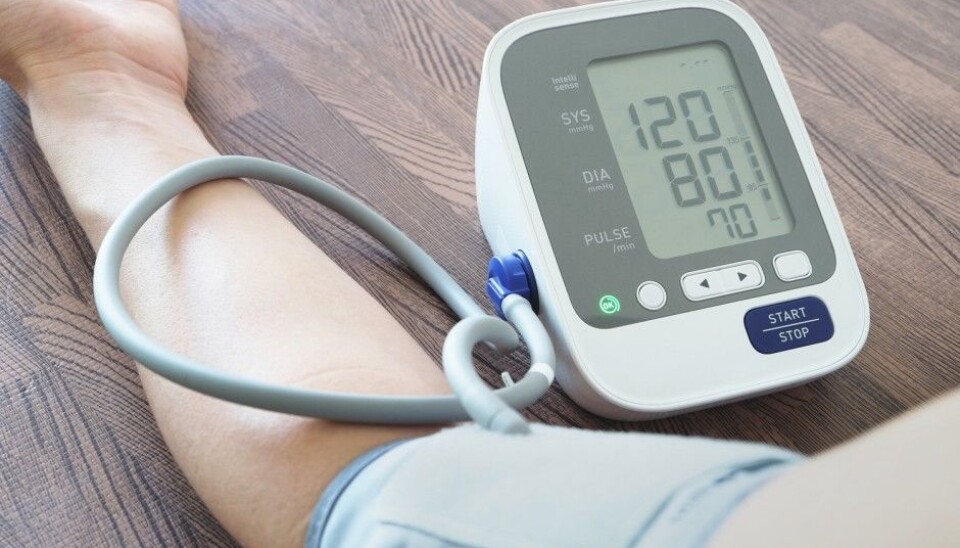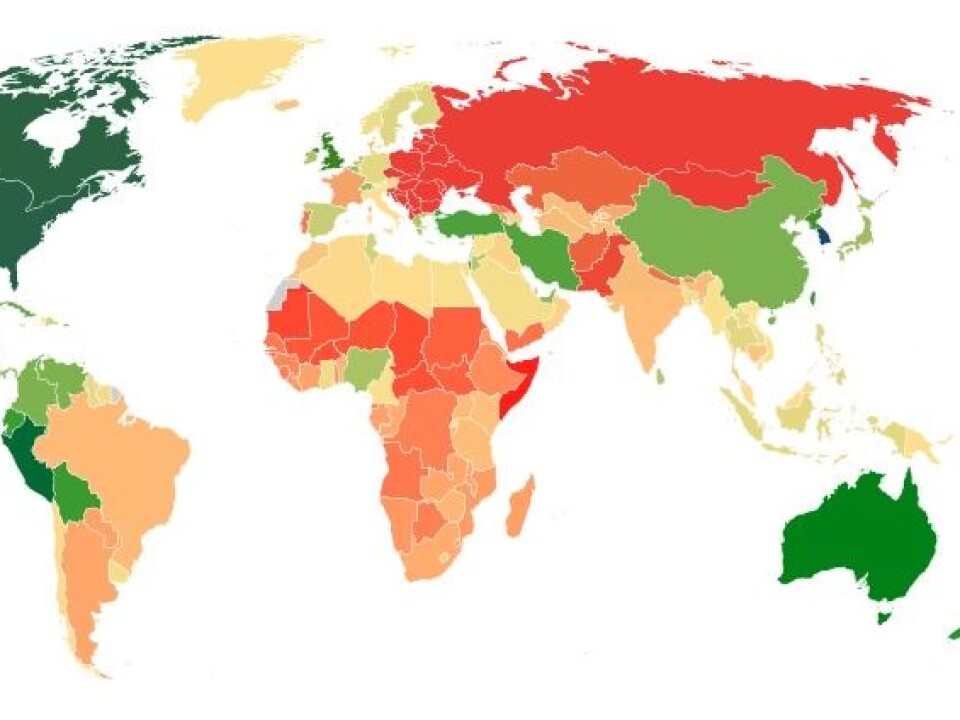
Steep decline in blood pressures in Norway
But scientists and medical doctors can’t explain why.
High blood pressure is never a good thing. Every eighth death in the world is due to problems it creates, such as heart and kidney disease and stroke.
The risks posed by high blood pressure are so significant that in November, the American College of Cardiology and the American Heart Association lowered their guidelines for when high blood pressure should be treated in the United States, from 140/90 mm Hg to 130/80 mm Hg.
But Norwegians are showing an encouraging trend when it comes to average blood pressures. New figures from what is called the Tromsø survey show that Norwegians' blood pressure has fallen significantly, across all age groups, a trend that has continued for the last 40 years.
"It makes you wonder how much longer this strong trend can continue," says senior researcher Inger Ariansen at the Norwegian Institute of Public Health.
Down from 61 to 36 per cent

Many Norwegians still have blood pressure that is too high. But the trends shown by the Tromsø survey are encouraging.
The new Tromsø figures show that just 32 per cent of all men aged 40 to 80 years have high blood pressure. Among the women in Tromsø, 25 per cent have high blood pressure.
Data from the Health Survey in Nord Trøndelag (HUNT) from a few years back also confirm the trend shown by the new Tromsø figures.
In Nord Trøndelag County, in the central part of the country, the proportion of men with high blood pressure decreased from 61 percent to 36 percent over 20 years. In women from this same study, the decline was from 54 per cent to 29 per cent.
“Unfortunately, we do not have national figures that can tell us about blood pressure change across Norway, which is what we would have liked. But these numbers from Tromsø and Nord-Trøndelag are a good substitute,” Ariansen says.
Finding the reasons for the drop
Although delighted by the good news, Norwegian researchers aren’t sure of the reason behind the drop.
"Many Norwegians have become much heavier. That means there must be something else that is causing blood pressure to go down. But what?” asked Laila Arnesdatter Hopstock, an associate professor at UiT The Arctic University of Norway in Tromsø.
"We simply do not know why we see this positive development," Ariansen said.
Some possible reasons for the drop might be that Norwegians have decreased the amount of salt they eat, while eating more fruits and vegetables.
The HUNT survey figures for blood pressure in individuals in North Trøndelag go back farther in time than the Tromsø data. These HUNT data show a clear kink in the trend, and show that blood pressure numbers began to drop more steeply right around 1995.
Thought the numbers were incorrect
When researchers first saw the clear decline in Norwegians' blood pressure, they suspected that the figures were incorrect.
"They thought there must have been something wrong with the equipment. But when they checked again, they saw that the data were correct,” Ariansen said.
Now scientists are finding exactly the same trend throughout the developed world. Blood pressure in both men and women has dropped in Europe and North America, as well as in South America, China and other countries in East Asia, according to a study published in academic journal The Lancet.
The largest proportion of men with high blood pressure is in Croatia, Latvia and Lithuania. The lowest proportion of men with high blood pressure is found in South Korea, the United States and Peru.
The largest proportion of women with high blood pressure is in African countries such as Niger, Ethiopia and Somalia. The lowest proportion of women with high blood pressure is also found in South Korea, the USA, Peru, Sweden — and Norway.
More than diet, weight and physical activity
A number of researchers now wonder whether there may be different causes for high blood pressure, other than diet, obesity and limited physical activity.
Could pollution, lead or noise be a contributing factor?
Or could something happen to a foetus during a pregnancy that causes high blood pressure in the individual later in life?
Ariansen says there has been a great deal of attention paid to what is called the Forsdahl-Barker hypothesis.
This hypothesis states that environmental conditions in the womb may increase the risk of high blood pressure later in life.
Anders Forsdahl (1930-2006) was a district doctor in Sør-Varanger in Finnmark for 12 years. He then became the first professor of general medicine in 1973 at the University of Tromsø.
It was his work in East Finnmark that made Forsdahl curious about whether prenatal conditions could be a contributing factor to what are often called lifestyle illnesses.
Forsdahl-Barker's hypothesis is that if a foetus experiences malnutrition, that can "program" the individual to be susceptible to illnesses later in life. There is already some support for this hypothesis, with research that has shown a connection between low birth weight and a risk of high blood pressure as an adult.
-------------------------------------
Read the Norwegian version of this article at forskning.no.
Scientific links
- NCD Risk Factor Collaboration (NCD-RisC): «Worldwide trends in blood pressure from 1975 to 2015: a pooled analysis of 1479 population-based measurement studies with 19·1 million participants», november 2016, The Lancet.
- Siri Vangen, Rannveig Nordhagen, Kari Kveim Lie: «Gjensyn med Forsdahl-Barker-hypotesen», Tidsskriftet, februar 2005.
- Hans Magne Gravseth, Petter Kristensen og Rannveig Nordhagen: «Er prenatale eller postnatale forhold viktigst for voksen helse? Eksemplet forhøyet blodtrykk», Norsk Epidemiologi, 2005.






























